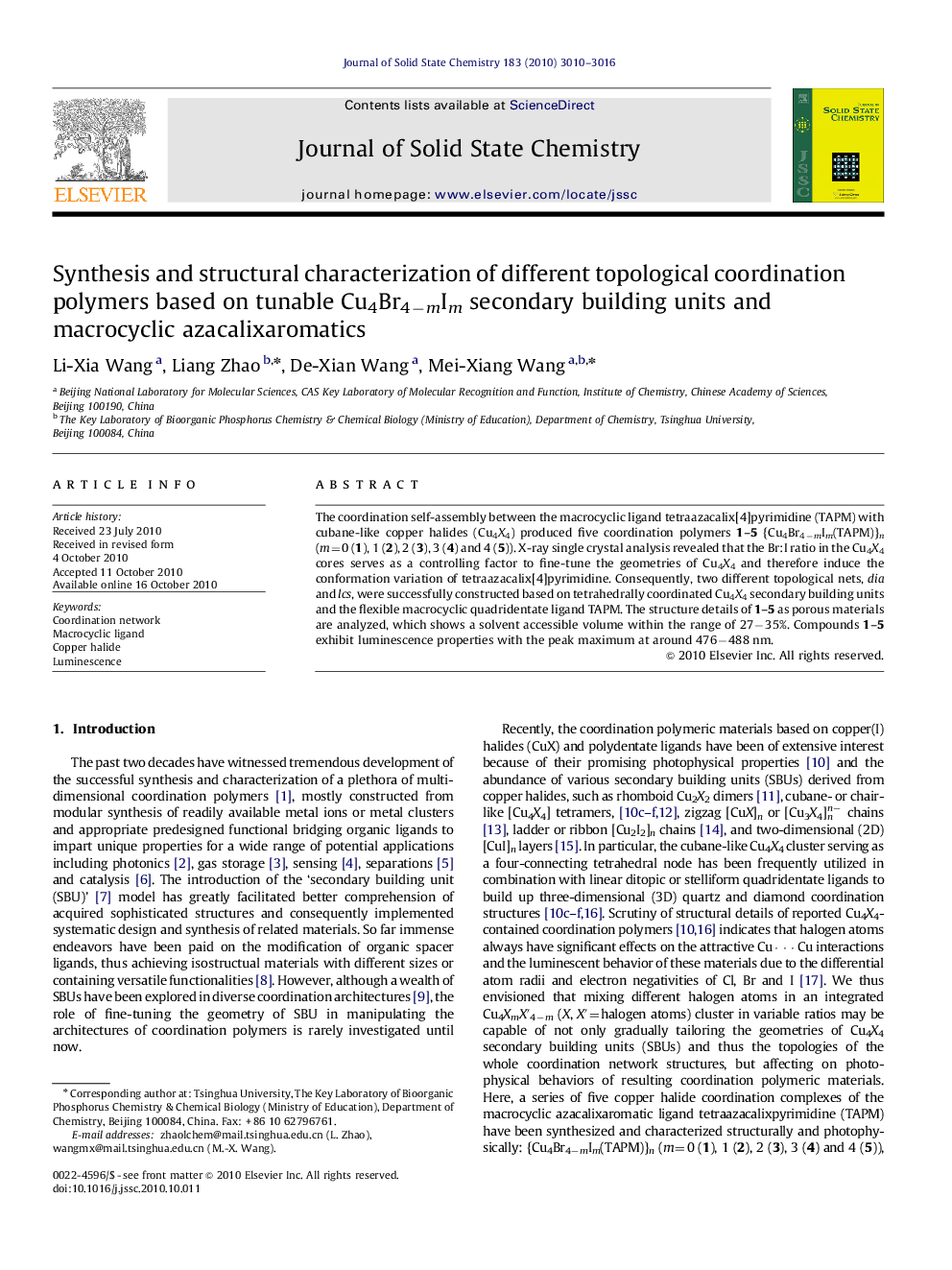| Article ID | Journal | Published Year | Pages | File Type |
|---|---|---|---|---|
| 1333252 | Journal of Solid State Chemistry | 2010 | 7 Pages |
The coordination self-assembly between the macrocyclic ligand tetraazacalix[4]pyrimidine (TAPM) with cubane-like copper halides (Cu4X4) produced five coordination polymers 1–5 {Cu4Br4−mIm(TAPM)}n (m=0 (1), 1 (2), 2 (3), 3 (4) and 4 (5)). X-ray single crystal analysis revealed that the Br:I ratio in the Cu4X4 cores serves as a controlling factor to fine-tune the geometries of Cu4X4 and therefore induce the conformation variation of tetraazacalix[4]pyrimidine. Consequently, two different topological nets, dia and lcs, were successfully constructed based on tetrahedrally coordinated Cu4X4 secondary building units and the flexible macrocyclic quadridentate ligand TAPM. The structure details of 1–5 as porous materials are analyzed, which shows a solvent accessible volume within the range of 27−35%. Compounds 1–5 exhibit luminescence properties with the peak maximum at around 476−488 nm.
Graphical AbstractFive luminescent coordination polymers 1–5 were obtained via the reaction of tetrahedral Cu4Br4−mIm SBUs and a flexible macrocyclic ligand tetraazacalix[4] pyrimidine (TAPM), wherein the Br/I ratio serves as a controlling factor to fine-tune the geometries of Cu4Br4−mIm and induce the conformation variation of TAPM, thus constructing two different dia and lcs topological nets.Figure optionsDownload full-size imageDownload as PowerPoint slideResearch Highlights► The ratio of Br/I in the Cu4X4 cores fine-tunes the geometries of Cu4X4. ► Variation of Cu4X4 induces the conformation change of the ligand TAPM. ► Two different coordination polymeric structures were successfully constructed. ► The five coordination polymers show good luminescent properties.
